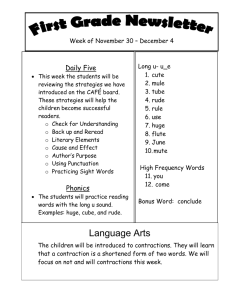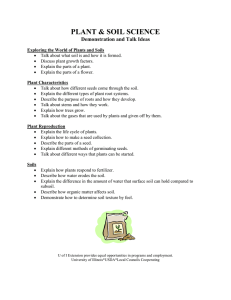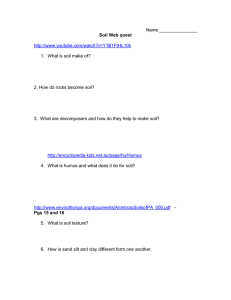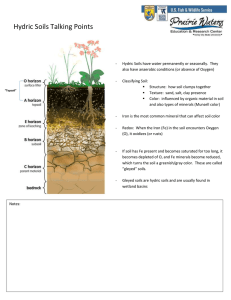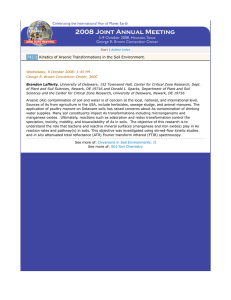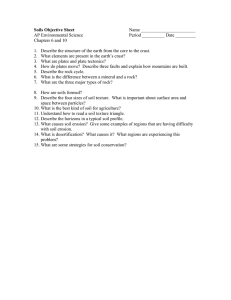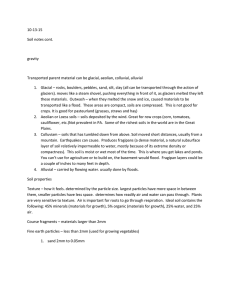GEOG 1111: Physical Geography Exam 3 Study Guide Summer
advertisement
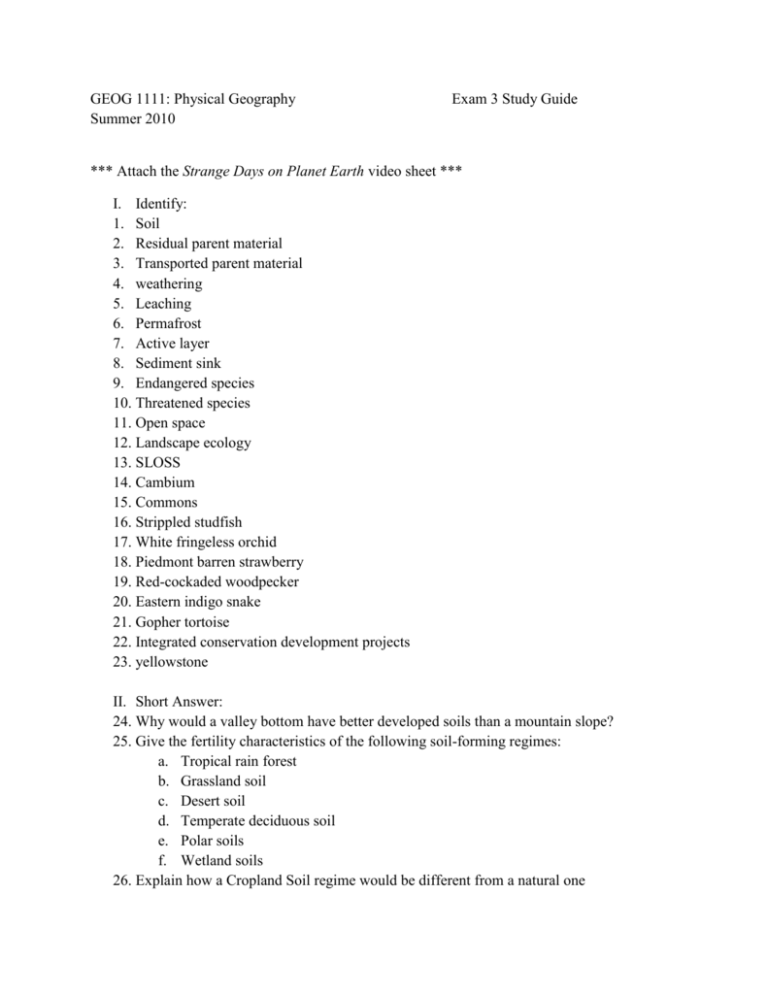
GEOG 1111: Physical Geography Summer 2010 Exam 3 Study Guide *** Attach the Strange Days on Planet Earth video sheet *** I. Identify: 1. Soil 2. Residual parent material 3. Transported parent material 4. weathering 5. Leaching 6. Permafrost 7. Active layer 8. Sediment sink 9. Endangered species 10. Threatened species 11. Open space 12. Landscape ecology 13. SLOSS 14. Cambium 15. Commons 16. Strippled studfish 17. White fringeless orchid 18. Piedmont barren strawberry 19. Red-cockaded woodpecker 20. Eastern indigo snake 21. Gopher tortoise 22. Integrated conservation development projects 23. yellowstone II. Short Answer: 24. Why would a valley bottom have better developed soils than a mountain slope? 25. Give the fertility characteristics of the following soil-forming regimes: a. Tropical rain forest b. Grassland soil c. Desert soil d. Temperate deciduous soil e. Polar soils f. Wetland soils 26. Explain how a Cropland Soil regime would be different from a natural one 27. Name and describe the 5 threats to soil resources 28. How is coastal sedimentation impacting the world’s coral reefs? 29. Name and describe the 5 most vulnerable species we discussed in class. 30. Why were Africans sometimes put on display with other primate in zoos during the 1800s and early 1900s? 31. Name some reasons why people would grow trees. 32. What is the mission statement of the USDA Forest Service? The Park Service? 33. What is the difference between the Preservationist School and the Wise-Use School? 34. What are the 4 ways in which vegetation can impact the atmosphere? 35. We discussed 8 major forestry issues in class. Describe 4 of them. 36. Explain the “Tragedy of the Commons”. Give some examples of Common areas. 37. Describe 2 of the approaches to environmental policy.







